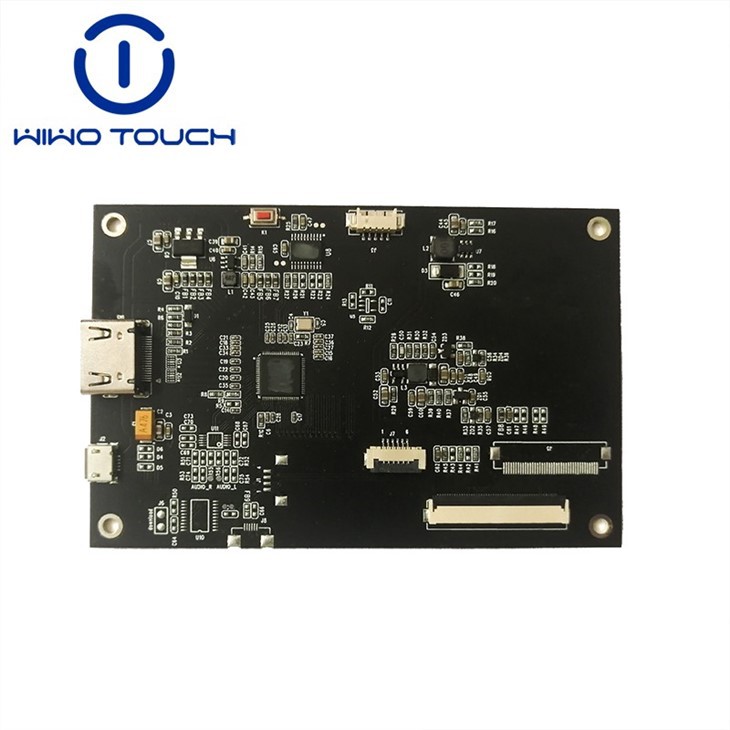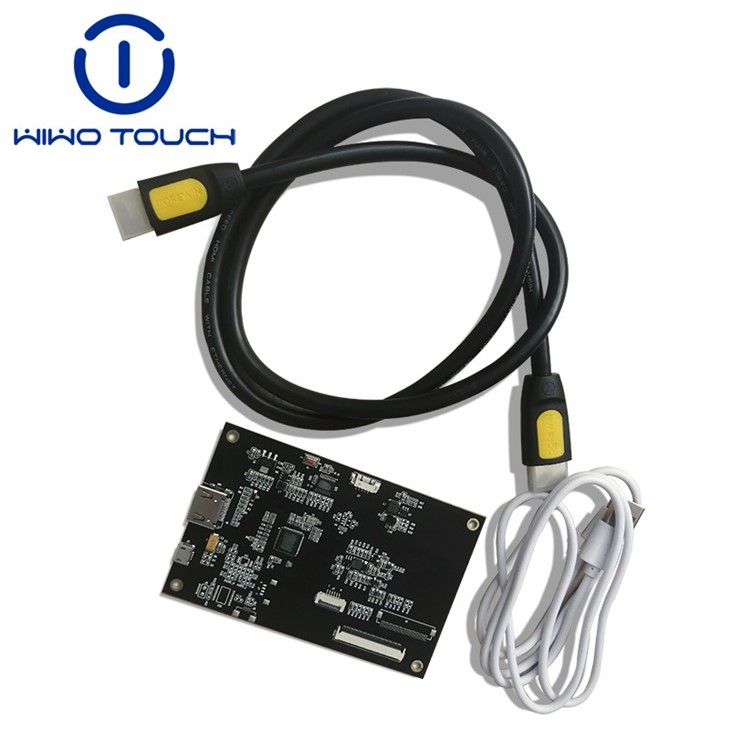Hey there! As a multi touch panel supplier, I've been getting a lot of questions lately about how to transfer data between a multi touch panel and a device. So, I thought I'd write this blog post to share some insights and tips on this topic.
First off, let's talk about why data transfer between a multi touch panel and a device is so important. In today's digital age, multi touch panels are used in a wide range of applications, from smartphones and tablets to industrial control systems and kiosks. These panels allow users to interact with devices in a more intuitive and natural way, and the data they generate is crucial for providing a seamless user experience. Whether it's tracking finger movements, detecting gestures, or sending commands to the device, efficient data transfer is key.
Now, let's dive into the different methods of data transfer between a multi touch panel and a device.
1. USB (Universal Serial Bus)
USB is one of the most common and widely used methods for data transfer between a multi touch panel and a device. It's easy to use, reliable, and offers high-speed data transfer rates. Most modern devices, including computers, laptops, and tablets, have USB ports, making it a convenient option.
When using USB for data transfer, the multi touch panel is connected to the device via a USB cable. The panel sends data to the device in the form of electrical signals, which are then processed by the device's operating system. The operating system interprets the data and translates it into actions, such as scrolling, tapping, or zooming.
One of the advantages of USB is its versatility. It can support different types of multi touch panels, including resistive and capacitive panels. Additionally, USB cables are readily available and inexpensive, making it a cost-effective solution.
However, USB also has some limitations. For example, the length of the USB cable can affect the data transfer rate. Longer cables may result in slower transfer speeds or signal degradation. Also, USB connections can be prone to interference from other electronic devices, which can cause data errors or loss.
2. I2C (Inter-Integrated Circuit)
I2C is another popular method for data transfer between a multi touch panel and a device, especially in embedded systems. It's a serial communication protocol that allows multiple devices to communicate with each other using a single bus.
In an I2C setup, the multi touch panel acts as a slave device, while the device it's connected to acts as the master device. The master device sends commands to the panel, and the panel responds by sending data back to the master. This communication is done using two wires: a serial data line (SDA) and a serial clock line (SCL).
One of the advantages of I2C is its simplicity. It requires fewer wires compared to other communication protocols, which makes it ideal for applications where space is limited. Additionally, I2C is a low-power protocol, which means it consumes less energy, making it suitable for battery-powered devices.
However, I2C also has some limitations. It has a relatively low data transfer rate compared to USB, which may not be suitable for applications that require high-speed data transfer. Also, the number of devices that can be connected to an I2C bus is limited, which can be a drawback in some applications.
3. SPI (Serial Peripheral Interface)
SPI is a high-speed serial communication protocol that is commonly used for data transfer between a multi touch panel and a device, especially in applications that require fast and reliable data transfer. It uses a master-slave architecture, where the device acts as the master and the multi touch panel acts as the slave.
In an SPI setup, the master device sends clock signals to the slave device, which synchronizes the data transfer. The master also sends commands to the slave, and the slave responds by sending data back to the master. SPI uses four wires: a clock line (SCK), a master output slave input line (MOSI), a master input slave output line (MISO), and a slave select line (SS).


One of the advantages of SPI is its high-speed data transfer rate. It can support data transfer rates of up to several megabits per second, making it suitable for applications that require real-time data processing. Additionally, SPI is a full-duplex protocol, which means it can send and receive data simultaneously, further improving the data transfer efficiency.
However, SPI also has some limitations. It requires more wires compared to I2C, which can make the wiring more complex. Also, SPI is a point-to-point communication protocol, which means it can only connect one master device to one slave device. If you need to connect multiple devices, you'll need to use multiple SPI interfaces.
4. Bluetooth
Bluetooth is a wireless communication technology that allows devices to communicate with each other over short distances. It's a popular option for data transfer between a multi touch panel and a device, especially in mobile applications.
When using Bluetooth for data transfer, the multi touch panel and the device need to be paired. Once paired, the panel can send data to the device wirelessly. Bluetooth uses radio waves to transmit data, which eliminates the need for cables and makes it more convenient to use.
One of the advantages of Bluetooth is its mobility. It allows users to move the multi touch panel freely without being restricted by cables. Additionally, Bluetooth is a low-power technology, which means it consumes less energy, making it suitable for battery-powered devices.
However, Bluetooth also has some limitations. It has a relatively short range compared to other wireless technologies, typically up to 10 meters. Also, Bluetooth connections can be prone to interference from other electronic devices, which can cause data errors or loss.
Choosing the Right Data Transfer Method
When choosing a data transfer method between a multi touch panel and a device, there are several factors to consider. These include:
- Data Transfer Rate: If you need to transfer large amounts of data quickly, you'll need a method that offers high-speed data transfer rates, such as USB or SPI.
- Distance: If the multi touch panel and the device are located far apart, you may need to use a wireless method, such as Bluetooth.
- Power Consumption: If you're using a battery-powered device, you'll need a method that consumes less energy, such as I2C or Bluetooth.
- Cost: Some data transfer methods, such as USB, are more cost-effective than others. You'll need to consider your budget when choosing a method.
- Compatibility: Make sure the data transfer method you choose is compatible with both the multi touch panel and the device.
Our Multi Touch Panels
As a multi touch panel supplier, we offer a wide range of products that are designed to meet the needs of different applications. Our panels are available in various sizes and resolutions, and they support different data transfer methods, including USB, I2C, SPI, and Bluetooth.
For example, we have the Small touch lcd display module 0.96 - 10.1" screen 7 inch 1024RGB600 LCD touch screen with IIC interface, which is a compact and versatile multi touch panel that uses the I2C interface for data transfer. It's suitable for applications where space is limited and low-power consumption is required.
We also have the 7 Inch TFT Liquid Crystal Display, which offers high-resolution graphics and fast data transfer rates. It supports USB and SPI interfaces, making it ideal for applications that require high-speed data transfer.
And if you're looking for a touch screen panel with a more advanced technology, check out our TFT Touch Screen Panel. It uses capacitive touch technology, which provides a more responsive and accurate touch experience. It supports multiple data transfer methods, including Bluetooth, making it suitable for mobile applications.
Conclusion
In conclusion, there are several methods of data transfer between a multi touch panel and a device, each with its own advantages and limitations. When choosing a method, it's important to consider factors such as data transfer rate, distance, power consumption, cost, and compatibility.
As a multi touch panel supplier, we're committed to providing high-quality products and excellent customer service. If you're interested in our multi touch panels or have any questions about data transfer methods, please don't hesitate to contact us for a purchase negotiation. We'll be happy to help you find the right solution for your needs.
References
- "Fundamentals of Data Communication" by Andrew S. Tanenbaum
- "Wireless Communication Systems" by Theodore S. Rappaport
- "Serial Communication Protocols: USB, I2C, SPI" by Electronics Tutorials




